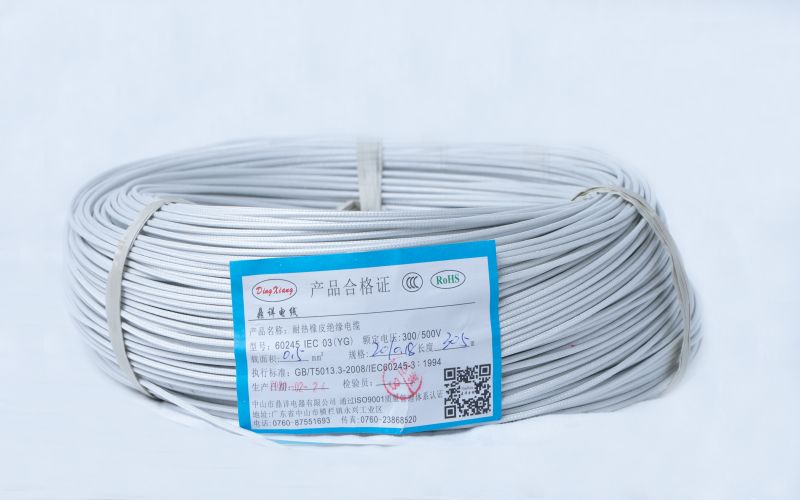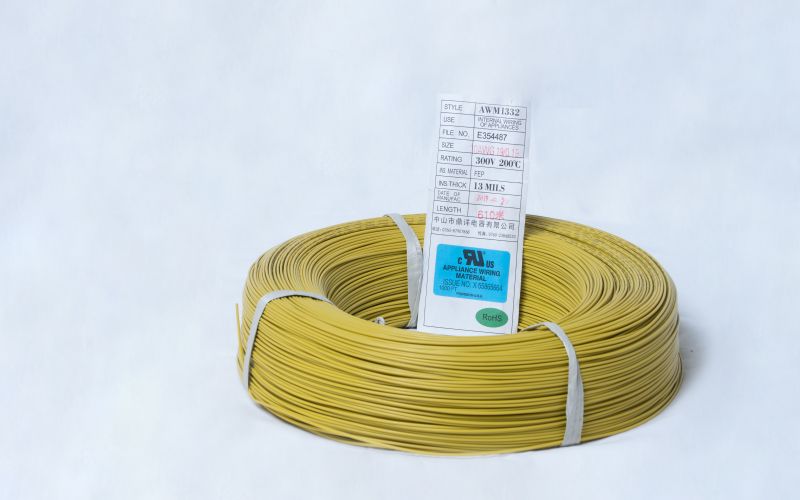When choosing wiring for automotive applications, factors like heat resistance, flexibility, and durability are crucial. UL3122 silicone braided wire is widely recognized for its high-temperature performance and excellent insulation properties. But is it suitable for automotive wiring? Let’s explore its characteristics, advantages, and potential applications in vehicles.
What Is UL3122 Silicone Braided Wire?
UL3122 silicone braided wire is an electrical wire featuring a silicone rubber insulation and a fiberglass braided outer layer. It is designed to withstand high temperatures, typically ranging from -60°C to 200°C (or even higher, depending on the specification). This makes it a popular choice for environments where standard PVC-insulated wires may degrade or melt.

Why Use UL3122 Silicone Braided Wire in Automotive Applications?
Automotive wiring must handle extreme conditions, from high engine temperatures to constant vibrations and exposure to oils, fuels, and moisture. Here’s why UL3122 silicone braided wire is a strong contender for use in vehicles:
1. High-Temperature Resistance
One of the biggest challenges in automotive wiring is heat exposure, especially in engine compartments and exhaust system wiring. UL3122 silicone braided wire high temperature resistance ensures that it does not degrade or melt under extreme heat, making it reliable for demanding automotive environments.
2. Superior Flexibility and Durability
Compared to traditional PVC-insulated wires, silicone braided wire remains flexible even in low temperatures. This flexibility is crucial for automotive wiring that needs to bend around engine components without breaking or cracking. The fiberglass braid reinforcement adds extra strength, reducing wear and tear over time.
3. Excellent Electrical Insulation
Automotive electrical systems require stable and safe wiring to prevent short circuits and electrical failures. UL3122 silicone braided wire insulation provides excellent dielectric strength, ensuring reliable performance even under high voltage or high-current conditions.
4. Chemical and Moisture Resistance
Cars are exposed to various harsh conditions, including oil leaks, fuel splashes, and high humidity. UL3122 silicone braided wire chemical resistance prevents it from deteriorating when exposed to grease, lubricants, or automotive fluids, making it an excellent choice for wiring in critical vehicle components.
5. Flame Retardant and Safety Compliant
In case of electrical malfunctions, fire resistance is a key safety feature. UL3122 silicone braided wire flame resistance ensures that it is less likely to ignite or spread flames, enhancing vehicle safety. Additionally, being UL-certified, it meets strict safety and performance standards.
Common Automotive Applications of UL3122 Silicone Braided Wire
Given its exceptional properties, UL3122 silicone braided wire is often used in:
Engine wiring – Handles high heat near engines and exhaust systems.
Battery cables – Ensures stable electrical conductivity in demanding conditions.
Lighting systems – Used for headlights, LED strips, and dashboard wiring.
Sensor wiring – Ideal for temperature sensors and other electronic control systems.
EV and hybrid vehicles – Provides insulation for high-voltage components.
Conclusion: Is UL3122 Silicone Braided Wire a Good Choice for Automotive Wiring?
Yes! UL3122 silicone braided wire is an excellent option for automotive wiring, especially in high-temperature areas. Its heat resistance, durability, flexibility, and chemical resistance make it superior to standard automotive wires. Whether for engine compartments, battery connections, or sensor wiring, this wire ensures long-lasting and reliable electrical performance in vehicles.
Looking for high-quality UL3122 silicone braided wire for your automotive projects? Make sure to choose a reputable supplier to ensure compliance with safety standards and durability. Would you like recommendations on where to buy the best UL3122 silicone braided wire for automotive use?



